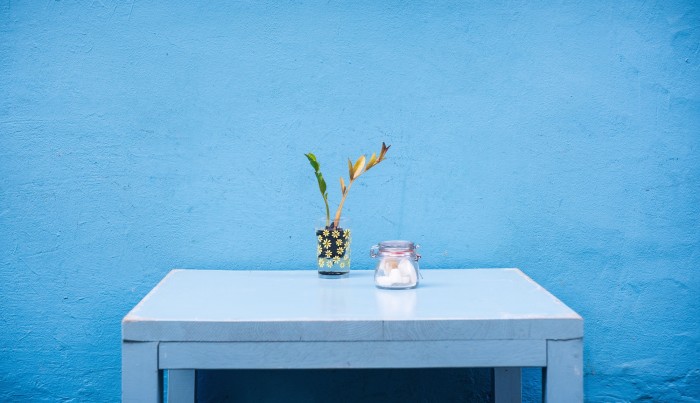
I was a lucky child. On Christmas mornings I would be presented with such an abundance of toys that I could barely see the ocean-colored carpet where I’d spend long winter days pretending I was on the beach.
It was every kid’s dream.
As I got older, my focus began to shift; I began to desire experiences more than things. This became increasingly clear when I set out to start a life with my husband.
I didn’t want a big diamond; I wanted a loving provider and protector. It seemed silly to spend over one hundred dollars each month on cable, when we could’ve been saving that money, or spending it out living instead of sitting before the television for hours on end.
Instead of trading gifts, why not have the experience of an overnight getaway somewhere romantic and picturesque?
These are the roots from which we’ve grown our simplified lifestyle, and why I am writing this as an informal guide to anyone interested in dipping their toes into the pool of minimalist living. As we get deeper into the world of minimalism, we’ll explore concerns, benefits, values, motivations, and practices that make up this simplistic life.
Our attachment to stuff is a huge source of stress for people, yet for some, the thought of lessening their possessions seems like a bad thing. For much of our lives, excessive material items have been presented as necessities or, at the very least, things we should covet, so imagining a lifestyle focused on having less may seem odd. Many find themselves intrigued by the idea of minimalism, yet still resist, equating it with self-denial of anything material or remotely indulgent. Let’s dissolve this assumption, as there are many shades of grey between a life of excess and one of extreme austerity.
The main aspiration of the minimalist life is freedom. Minimalism frees up money, time, space, and energy, enabling us to spend less time tending to material items, and more time on ourselves, our personal growth, and our cherished relationships. People who’ve chosen minimalism have taken it to varying degrees: some have simply acquired peace and clarity of mind, a fuller savings account, or the means to enjoy vacations more frequently. Others have taken it to the next level, selling their homes and nearly all of their belongings, building a tiny house, and living their dream life free of debt.
Minimalism encourages us to be mindful about our purchases, motivates us to clear out what no longer serves us, and helps us to put things in perspective.
Knowing our values is the essential first step on the path to minimalism. Begin by making a list of the most important things you want to want to experience in this life, and another of what you’d like to leave behind.
Most of us take a certain amount of pride in our possessions. We want ourselves and our living spaces to be well kept, clean, and attractive. Upon beginning this voyage we may need to ask ourselves whether we hold onto or purchase certain items because we truly enjoy them, or to assert our equality or superiority in relation to others. Are we associating our worth with our stuff, or attempting to show our value through ostentatious belongings? Are we using our material possessions to impress others or incite envy?
If you feel minimalism could potentially enrich your life, read on for ways to bring it into practice.
Clearing space.
This step is where we officially bring minimalism into our lives. It’s easiest to begin the process of getting rid of what we deem unnecessary or no longer of use at the change of the season. When switching out fall and winter clothes, for example, anything we’ve forgotten or haven’t worn over the past six months goes right into the consignment or donation pile. Afterward, this method can be applied to each room in the house. Some items you may find are: old books, magazines and DVDs, dust-collecting knick-knacks, expired dry goods, small kitchen appliances, toys your children have outgrown, and the like.
A good rule of thumb is to get rid of anything that hasn’t been used in a year. For most, the whole process takes an hour or two maximum.
What about shopping?
While it’s obvious that the easiest way to avoid acquiring excessive stuff is not purchasing it in the first place, minimalism doesn’t have to mean denying oneself of material pleasures or the enjoyment of shopping. Online shopping can be a minimalist’s dream. Shoppers can place items in their virtual cart for a few days. If the items are forgotten, perhaps they weren’t needed or wanted. On the other hand, if shoppers find themselves thinking of their cart and decide the items are of importance, they can take the plunge. Before making any purchase, ask yourself a few questions: “Do I need this or do I already have enough (whatever the item in question may be) in good condition? Will I put this to use? When? Is it worth the cost? Can I find a better deal?”
Out with the old.
Prior to bringing home a new purchase, it’s a smart idea to create space for said item by donating something else that’s worn out its welcome. Through applying this rule to every purchase; I’ve found it to be a practical way of preventing the accumulation of clutter.
What’s new?
Anyone who’s sold even their most gently-used possessions knows that material things lose their monetary value long before memories of cherished experiences fade. Consider buying second hand. So many “like new” items can be found online or in consignment shops. At first, this concept of buying used didn’t sit well with me as I thought that used items would be unsanitary. However, things can be washed, disinfected, or even steam-cleaned. We have many second pieces of furniture that look great, go with our color scheme, and work just as well as those items we’d purchased new.
Simplicity is less about what what we’re removing and more about what we’re able to welcome in after we’ve cleared space. Those ready to take the leap can transition into minimalism at their own pace.
Author: Nahtalya Aubreane
Image: Padurariu Alexandru / Unsplash
Editors: Renée Picard; Emily Bartran






Read 1 comment and reply